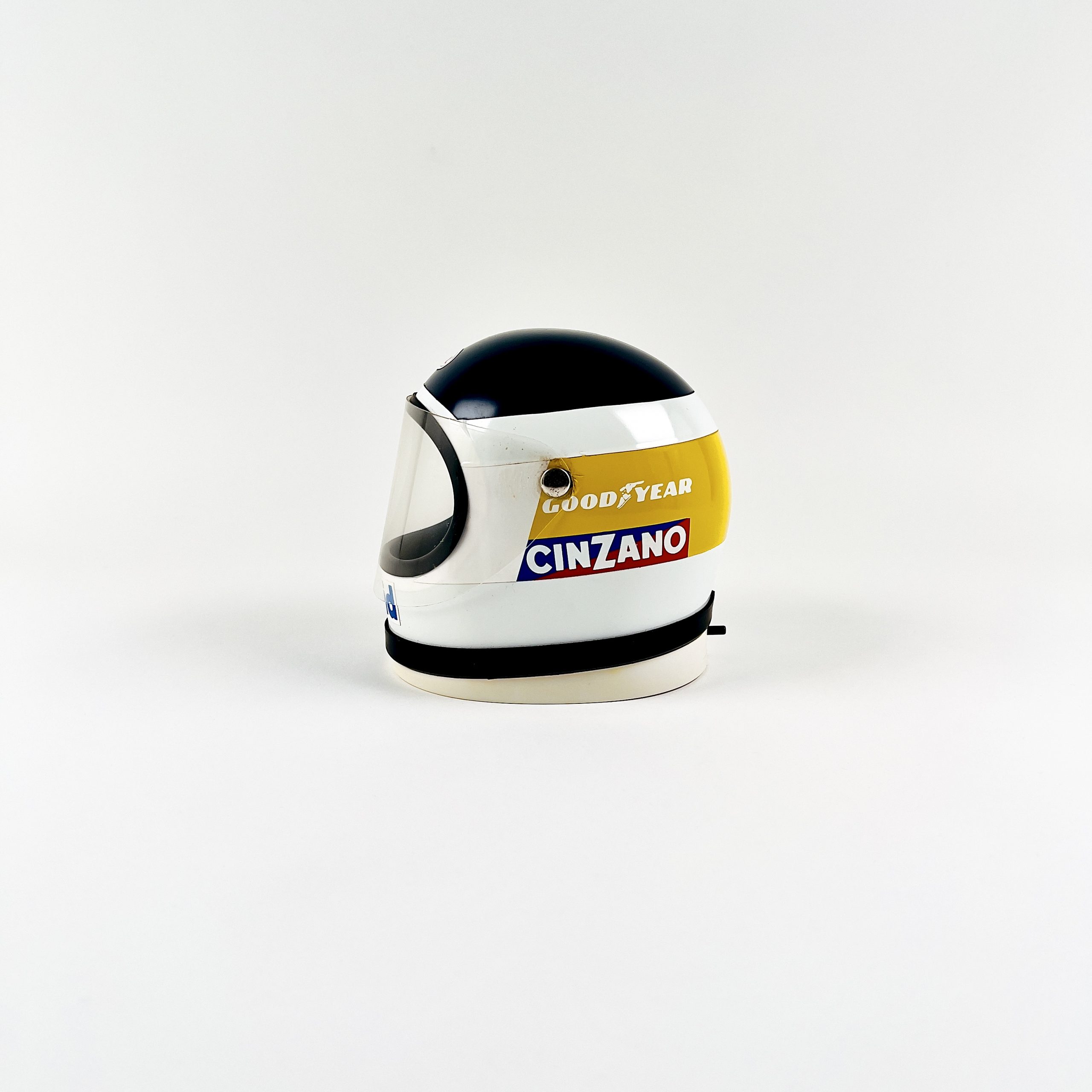HELMET CLOCK HEUER "CAVALLINO" CARLOS REUTEMANN 1978
SOLD
This clock from the 70's was part of a small series of racing helmets from that era, internally equipped with a clock. The series was named "Cavallino" and was already a collector's item at the time.
The model presented here is relatively rare, as it's a replica of the helmet worn by Carlos Reutemann, Argentine driver and major figure in the Formula 1 World Championship between 1972 and 1982. Precisely this reference is 43990, a new model from 1978. This model is one of the first series, signed just "Heuer". It is also a version with alarm.
Heuer-Leonidas S.A. is one of Switzerland's leading manufacturers of high-quality chronometers, chronographs and short-time measuring devices, including electronic timing instruments.
In its 150+ year history, the company has always been at the forefront of bringing major improvements to the art of time measurement.
Here are some of the important HEUER innovations that preceded the release of the "Cavallino" collection:
In 1867, HEUER obtained one of the first patents for stem-wound pocket watches. Until then, all watches were key-wound.
In 1882, HEUER began mass production of pocket chronographs and invented the "TELEMETER" dial division to measure the trajectory of artillery shells.
In 1889, HEUER was awarded a silver medal at the Paris Universal Exhibition for creating the first complete collection of pocket chronographs with minute counter and split-seconds mechanism.
In 1908, HEUER invented and patented the "PULSOMETER" dial chronometer, still used today for medical applications.
In 1911, HEUER developed the first dashboard clock with separate travel time indicator.
In 1916, HEUER produced the first split-seconds chronometers indicating 1/100th of a second.
In 1920, 1924 and 1928, HEUER officially timed the Olympic Games in Antwerp, Paris and Amsterdam.
In 1933, HEUER built the first automobile dashboard chronometer with hour counter, the "AUTAVIA".
In 1949, HEUER developed and patented the unique "MAREOGRAPH" chronograph, which indicates both high and low tide.
In 1957, HEUER patented the first chronometer with interchangeable dials. This led to the development of a range of chronometers with central minute counters.
In 1958, HEUER created and patented the famous "MONTE-CARLO" dashboard chronometer with 12-hour jumping disc.
In 1965, HEUER began its development of the electronic chronometer with the creation of the "MICROTIMER".
In 1969, HEUER launched the world's first self-winding wrist chronograph: further proof of its leadership in watchmaking technology.
In 1972, HEUER developed its first fully electronic digital pocket chronometer, called "MICROSPLIT".
In 1975, HEUER introduced the "CHRONO-SPLIT", the world's first solid-state wrist chronograph with dual displays.
In 1976, HEUER introduced a new generation of "LCD-MICROSPLIT" solid-state chronometers, marking a milestone in design and miniaturization.
In 1977, HEUER launched the "MANHATTAN GMT", a unique combination of analog quartz watch and digital chronometer.
In 1978, HEUER was appointed "Official Timekeeper of the 1980 Olympic Games" on behalf of Swiss Timing.
HEUER will be timing certain events in Lake Placid and Moscow.
The overall condition is pretty good for its almost 50 years. A real collector's item for motor sport enthusiasts.
Manufacturer: Heuer
Model: Cavallino
Catalogue number: 43990
Year: 1978
Materials: Plastic and metal
Dimensions: Approx. width 9.5 cm depth 12 cm height 12 cm
Caliber: N/A, Quartz
Box/paper: no












